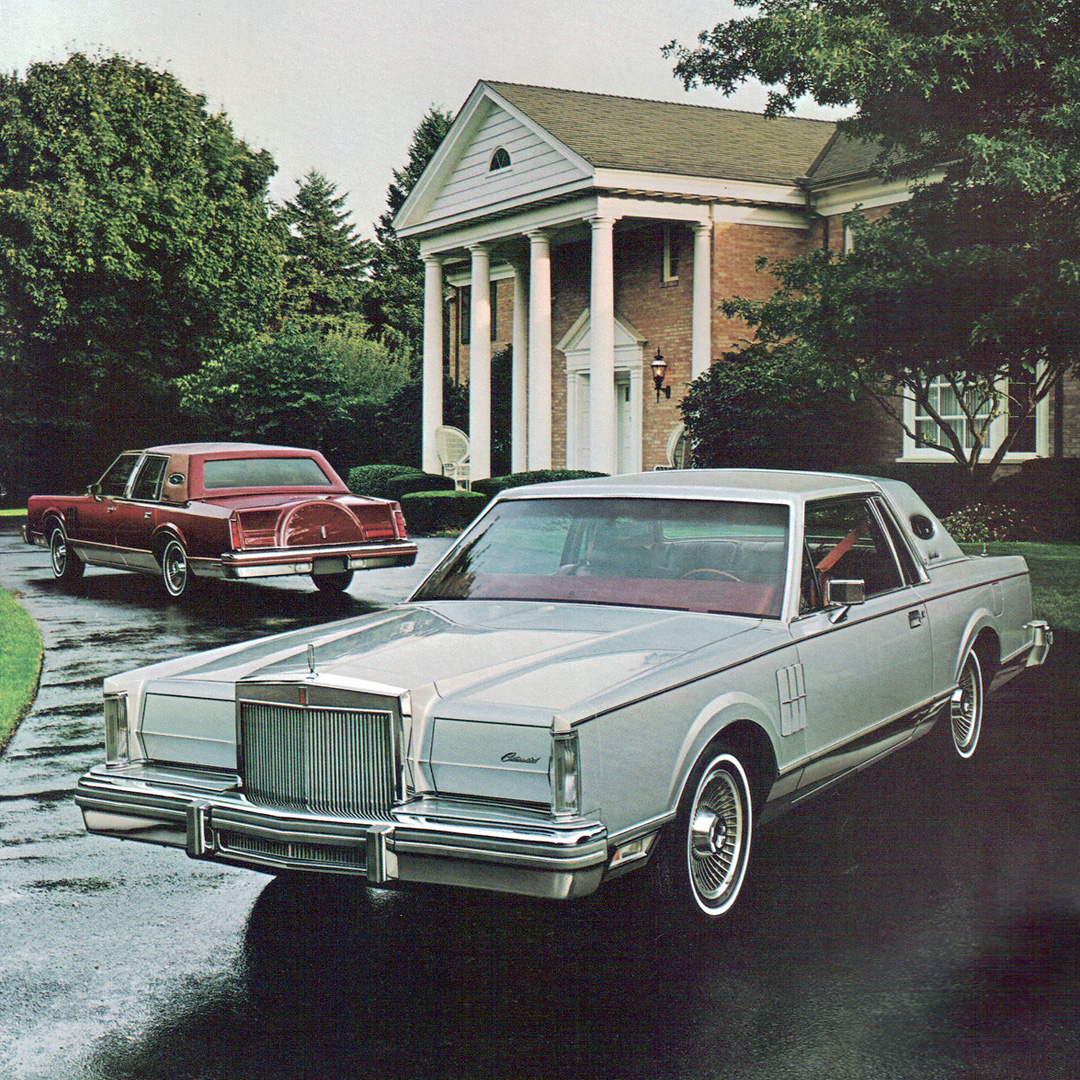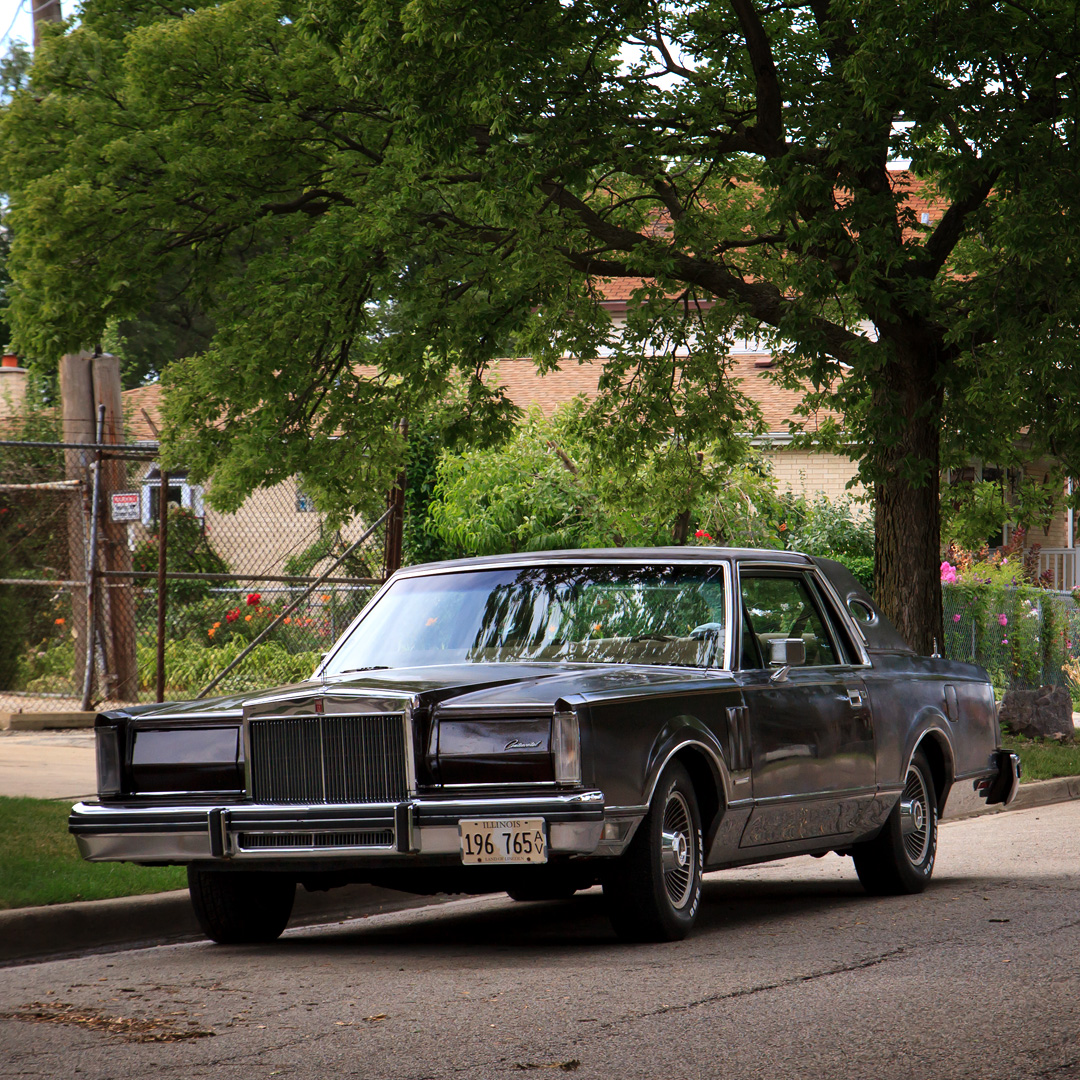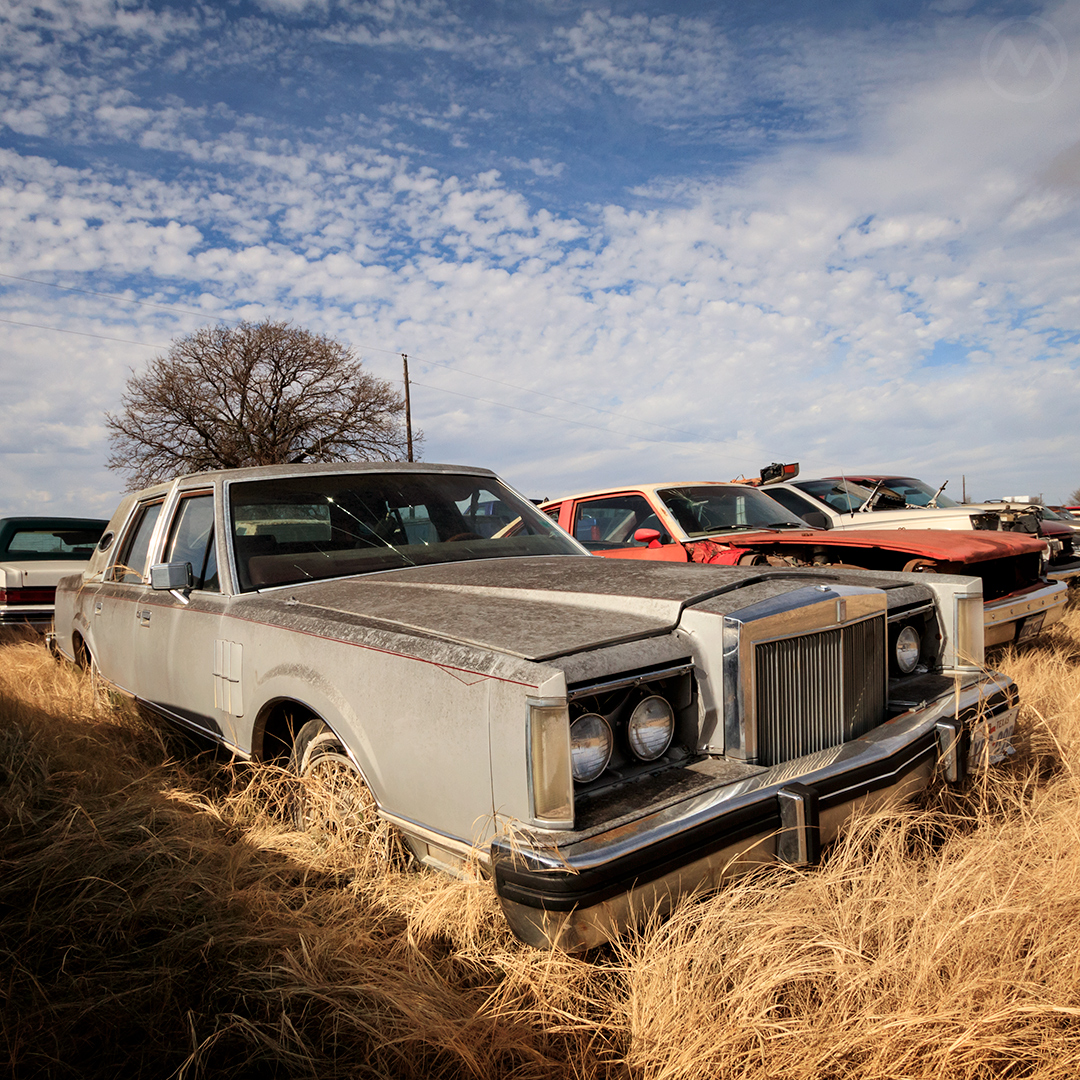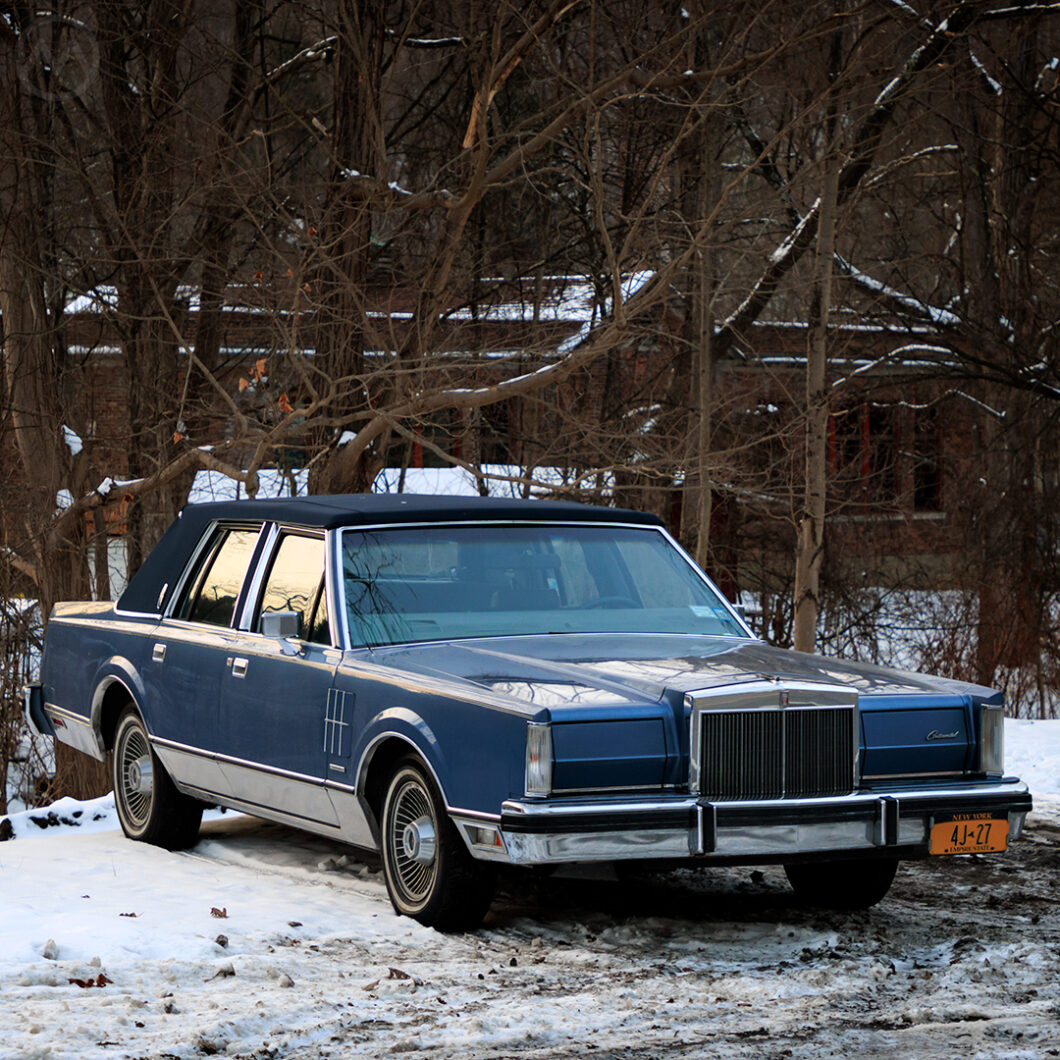Technically, it’s not the only four-door “Mark” ever made, but the 1980-83 Lincoln Continental Mark VI sedan is probably the most famously misunderstood variation of this long line. It is, of course, the brainchild of Lee Iacocca, famously Ford’s most valuable product planner in the 1960s and 1970s before Henry Ford II sacked him in 1978.
According to the late Gale Halderman, who was heavily involved with creating this car, the four-door Mark VI prototype was presented in the styling studio on the very day Iacocca was ousted, but more on that in a minute.
A Multitude of Marks
From 1958 to 1960, there were Continental Mark III, IV, and V sedans that were meant to follow up the famous 1956-57 Continental Mark II, itself not actually a Lincoln but briefly a stand-alone one-model division. The late fifties Marks were, by comparison, forgettable and indistinct from Lincoln’s generally unloved late fifties unibody sedans — huge, heavy, and gimmicky.
Those cars have a small fandom today, but Elwood Engel’s sleek 1961 Lincoln design banished them from the public consciousness, and when Iacocca’s 1968 Mark III (MkIII) debuted, they were virtually erased from Lincoln’s official history.
Iacocca’s idea for his “reset” of the Mark lineup was part marketing genius, part timing. His new MkIII took the style of the famous 1956-57 Continental and applied it to a cheaper-to-build, more accessible machine, and it debuted just as Americans started to crave personal luxury cars in real numbers.
The Mark III was a runaway hit even if its plebeian Thunderbird roots weren’t far beneath the surface, and it became the first Lincoln model to outsell its Cadillac equivalent, the late 1960s front-drive Eldorado. In fact, the MkIII and its increasingly huge MkIV (1972) and MkV (1977) successors proved to be the hottest-selling Lincolns ever up to that time.
In that context, it’s unsurprising that Lincoln’s management and Iacocca wanted to expand this formula and help stave off the potential problems with downsizing the Mark. New Corporate Average Fuel Economy (CAFE) regs meant 5,000-pound, 19-foot long, 9-mpg coupes were soon to be an endangered species, but Ford was working hard on what became the Fox & Panther platforms in 1976 when planning for the Mark VI began.

A Smaller Mark VI
Perhaps surprisingly, it was Henry Ford II himself who ordered the Mark’s downsizing in 1976, just as the largest and most popular Mark of all time, the MkV, was about to drop into showrooms. He couldn’t have known then that the Iranian revolution would spawn a second oil crisis, but CAFE (corporate average fuel economy) standards were already coming, and the MkV earned plenty of criticism for its vastness even as it flew off dealer lots — until OPEC II.
Originally, design lead Gale Halderman wanted to put the downsized Mark on the Fox platform like the then-upcoming 1980 Ford Thunderbird and Mercury Cougar, and that’s what the styling was originally intended for. It ended up on the Panther chassis for cost reasons (it was easier to produce at Lincoln’s Wixom plant rather than adding Lincolns to another line).
Halderman was pleased with how it came out, but the actual design lead, John Aiken, and his team took no chances with this design, more or less heavily patterning it on the big-selling MkV. The two different new platforms, however, had vastly different wheelbases than the older Marks, so keeping the huge overhangs meant the wheelbase seemed a little short, even on the Panther chassis.
Since the formula had worked so well, it’s no mystery why the Lincoln team stuck with it. What was surprising, however, was that during the development process, Iacocca called for expanding the lineup with a four-door sedan and even a station wagon, which would have been a first for Lincoln. Unfortunately, his ouster on July 13, 1978, meant that enthusiasm for a vast expanded Mark lineup rapidly dwindled, and only the four-door version made it to production.

For cost reasons, it had to be pretty closely based on the regular Continental, which was eventually relabeled as the Town Car in 1982. While the Mark VI coupe was quite distinctively a slimmed-down Mark V, the Mark VI sedan looked like what it was: a regular Continental sedan with the hidden headlights and “Mark” rear end sort of tacked on. The vinyl top on this one hides one of the Mark VI sedan’s trademark differentiations — big old opera windows on the C-pillar.
The Panther platform underpinnings were rock solid though, and would ultimately prove sturdier than the series of engine and drivetrain disasters from Cadillac in the early eighties. The Mark VI was also a much better car to drive than the elephantine MkV and got much better gas mileage, but none of this mattered in the end.
The Big Car Crackup
In late 1979, just as these cars were arriving, the Iranian revolution sparked a second fuel crisis while hyperinflation and spiraling interest rates left car buyers with headaches and empty wallets. Sales of big American cars across the board were torpedoed, and while they would climb in the mid-1980s after oil prices came down, traditional full-size sedans never entirely recovered from the 1980-81 disasters.
In this environment, Ford chose to focus its development efforts on smaller cars and front-wheel drive. At the end of 1981, it shuffled around all of the Lincoln model names. The Continental became the Town Car, while a new fox-body “Markless” bustle-backed Continental four-door was introduced to replace the late, unlamented Versailles that had been dropped in 1980.

The unpopular Mark VI sedan languished on lots in both body styles. After 1982, the four-door actually outsold the two-door as big luxury coupes slumped into a long-term sales decline. The Mark VI might have stayed too long at the party wearing that same outfit, and it never sold anywhere near as well as the MkV had. Part of the problem was that it was still big and thirsty, but it probably wouldn’t have done any better sharing bits with the disastrous 1980 Thunderbird/Cougar restyling.
In late 1983, it gave way to the much more modern and international-looking Mark VII, on the fox body as originally contemplated for the Mark VI, which reinvigorated sales, though never to their 1970s highs.
While GM killed off many of its rear drivers during early eighties decision-making, the Town Car stayed pat as Ford was investing in other areas, and it ended up a huge seller once oil prices came down. As if to partly recognize the value of the Mark VI sedan, the Town Car got a light restyle for 1984 with a sloped rear that seemed sort of Mark inspired, if bereft of the fake spare tire hump.
The cars in this story were seen in 2024 (Top, 1983 Mark VI Pucci Sedan), 2016 (1981 Mark VI Coupe), and 2018 (1980 Mark VI Sedan, at Browne’s Salvage).

